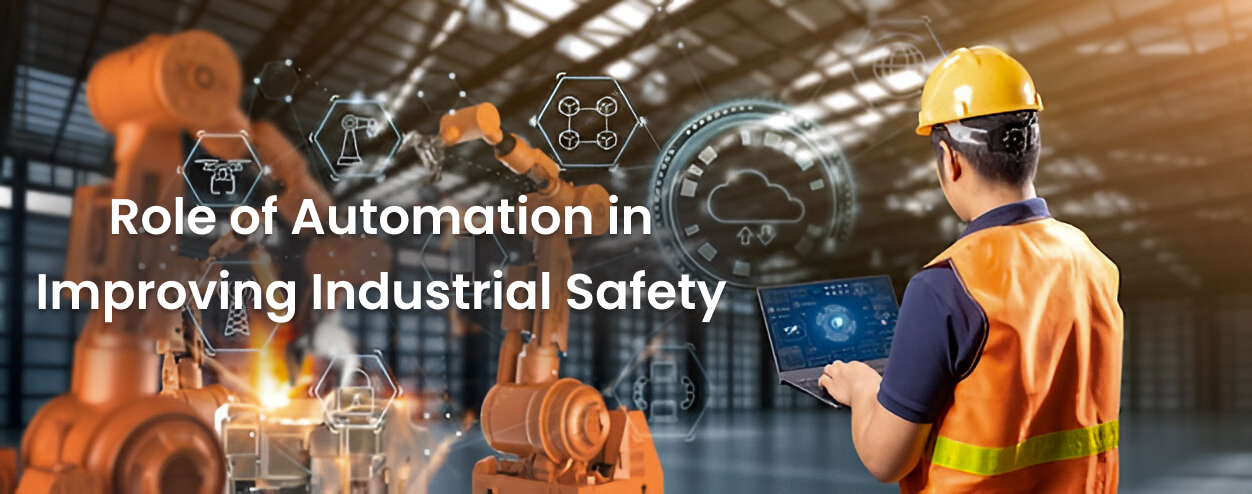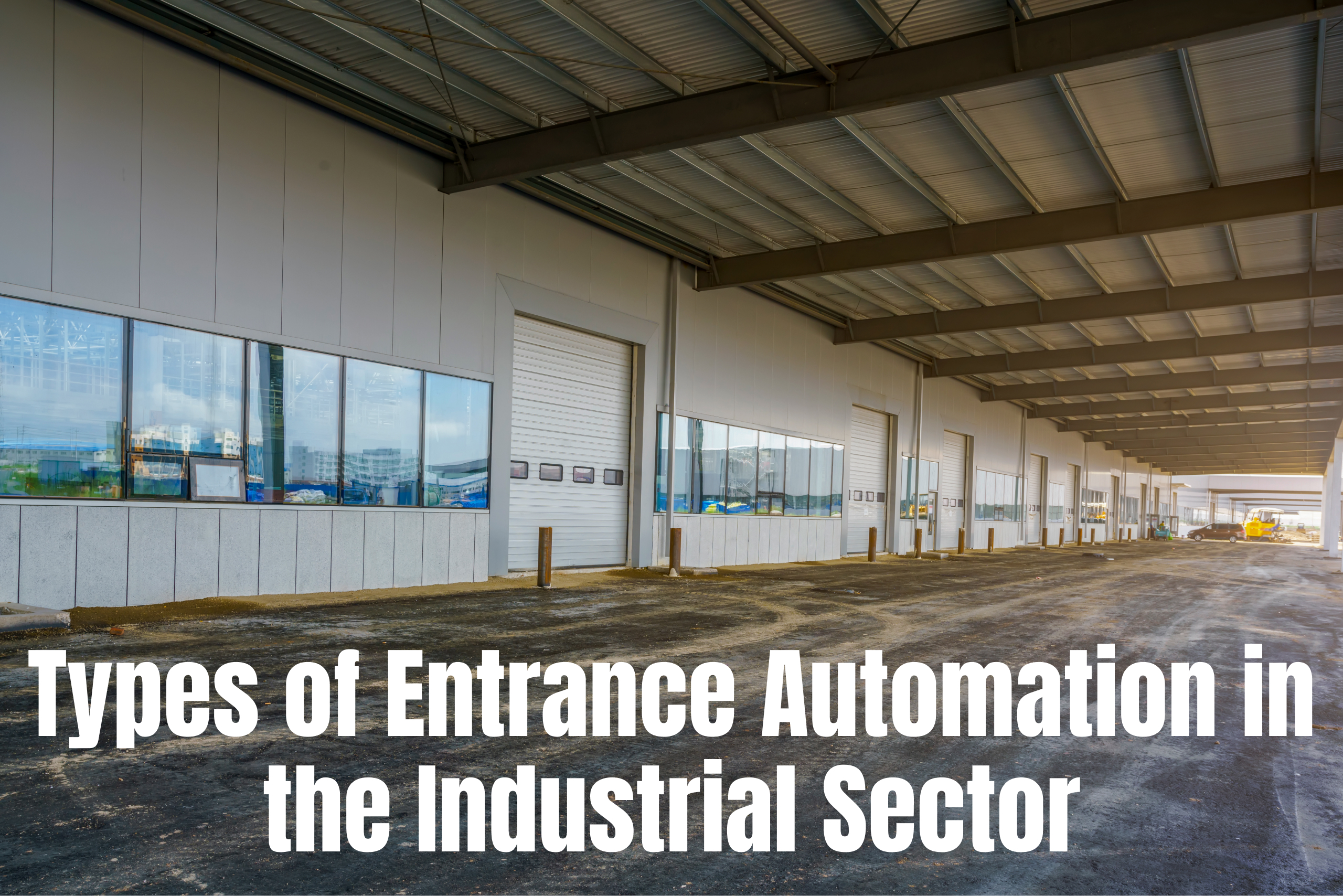Industrial safety is now a section of the modern industrial and production process. As more and more industries are flourishing, the introduction of new technology has become a matter of concern: how to maintain a hazard-free environment for manpower? Automation can serve a critical function in this area. For the industries, the systems integration of the automated systems, such as the automatic sliding gates, boom barriers, automatic entrance solutions, etc., can contribute to offering higher updated security, better productivity, and higher compliance with rules as well. Reviewed how automation is changing the face of industrial safety and discussed the role automated entrance systems play to contribute to a solution.
Why is industrial safety important?
Industrial workplace dangers such as hazardous materials, heavy machinery, and extreme heat or cold. Such hazards not only pose a risk to employee safety but also indicate that an organization that incurs such an accident would not only face accidents, lost time, and legal consequences but also stand to lose financially. The strategy to contain human exposure and keep efficiencies has been automation.
According to a study, companies recorded an enormous drop in the number of equipment damages and worker injuries compared to before automating safety systems. That reduction is done by automating repetitive or high-risk processes, enabling predictive maintenance, and enabling the monitoring of operations in real time.
The Importance of Automation in Industrial Safety
Risk Mitigation for Human/Animal Interaction
Automated technologies reduce direct human involvement with risky processes. For example, robots on assembly lines can carry out dangerous tasks such as welding, transporting heavy objects, and operating in hazardous environments (chemical manufacturing facilities, etc.). This reduces the risk of human error or fatigue causing damage.
Increased perimeter and access control security
Access to industrial areas is restricted through automated entrance systems like automatic sliding gates and boom barriers. Such devices have also been used to prevent intrusions of unauthorized entries; hence, less manpower is required for supervision.
1) Automatic Sliding Gates: These are commonly used gates to have at manufacturing plants and warehouses to provide a seamless approach to access control. Motion-sensitive gates are used to restrict movement to restricted areas to authorized personnel or vehicles.
2) Boom Barriers: These are commonly used in industrial parks and cargo terminals. These barriers regulate access and limit the number of cars and commuters entering the area, reducing crashes and accidents. The boom barrier has a sensor fitted inside, which will automatically report the presence of the car, and the intervention is automated.
Reduction in Rates of Repetitive Stress Injuries
In such manufacturing processes as sorting, lifting, and repetitive line operations, workers may suffer from injuries. With automation reducing these burdens on the shoulders of the workers, there are also reduced risks with body parts.
Predictive Maintenance with Real-Time Monitoring
IoT (Internet of Things)-enabled automated solutions monitor equipment and workplace conditions in real time. Predictive maintenance techniques identify potential equipment failures, mitigating risks of accidents caused by defective equipment.
Disaster Response and Evacuation Systems
Vehicle safety standards are automated and respond quickly to catastrophes like fires and chemical leaks. Doors open automatically with fire alarms for quick evacuation; automated sprinklers and shut-off systems quicken damage mitigation and eliminate hazards.
Removing the Human Element from Dangerous Jobs
Automatic Access Systems
Automatic sliding gates, turnstiles, and revolving doors not only make entry and leave easy but also play a crucial role in safeguarding. They ensure identity, minimize bottlenecks, and control the flow to significantly improve the safety of workers.
e.g.: Biometric-scanner-equipped turnstiles ensure that only authorized personnel penetrate sensitive sites in the pharmaceutical and defense industries.
Solutions for controlling access through barriers
Barrier systems such as boom barriers and bollards are used to protect industrial perimeters from unauthorized access by cars or impacts at high speeds. In such systems, smooth but secure access is ensured by the latest technologies, such as License Plate Recognition (LPR).
Fire and Smoke Automatic Safety Systems
There is a great reduction in the danger of fire, a better escape route, and safety of staff from deadly situations with the implementation of fire-rated automatic doors and smoke curtains.
Tele-Robotic Assistant for Hazardous Operations
We have robots already being used for nearly all types of mining and oil refineries, inspecting inside dangerous areas. Armed with sensors and cameras, the robots can find dangers like a gas leak or structural failure and keep humans away.
Safety via Automation in the Workplace: Consistency and Reliability
Automated systems do not tire or get distracted like human labor. Its regular practice means that they do not easily deviate from safety guidelines and thus significantly lowers the risk of an accident.
Using Data To Drive Safer Roadways
Automation systems produce piles of reports about safety performance and operational effectiveness. The collected information from such reports helps industries to develop their safety processes and to get compliance with safety standards.
Cost Efficiency
Although initial investments in automation systems may be high, long-term financial advantages may lead to fewer medical claims, lower insurance premiums, and reduced breakdown time.
Challenges and Considerations
Automation greatly increases industrial safety, but its implementation must be planned:
Cost: Like sophisticated automated systems like sliding gates and robotic arms, the initial cost of the automated system is relatively high.
Maintenance and Upgrades: They need regular maintenance and software upgrades for the best performance.
Training Workers: All workers must be trained to efficiently use and interact with automated technologies.
This way, the advantage far exceeds the problem, and thus a good investment in automation.
Conclusion
New Age Automation in Solution to Old-School Problems in Industrial Safety The influence of mechanization can be seen exceptionally clearly, from an automatic door that ensures safe access into a structure to total mechanical restaurants that take over dangerous jobs. Industries cannot simply adopt automation to achieve higher productivity; they need automation in order to ensure worker safety. With the advancement of technology, they are half tempered with the hope of building a more secure, smarter, and increasingly profitable industrial world.
By automatic sliding gates, boom barriers, and IoT-enabled systems, a future where safety is just a standard and not an issue can be yours.



